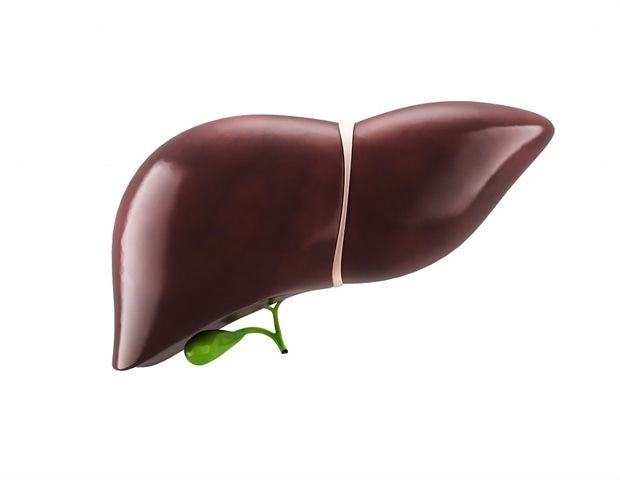An international collaborative study has identified the E2F2 protein as a potential new therapeutic target to prevent metabolic fatty liver disease from progressing towards more serious conditions, such as cirrhosis or liver cancer.
Metabolic fatty liver disease (also known as metabolic hepatic steatosis) is the most common chronic liver disease. It is characterized by an excessive accumulation of fat in the liver in people who do not consume large amounts of alcohol. This condition represents a significant risk factor for the development of serious complications, such as cirrhosis or liver cancer. 3 or 4 out of every 10 people are affected by it and, what is more, it is on the rise due to the increase in obesity and type 2 diabetes mellitus. It is also a heterogeneous disease, as both the causes and clinical progression can vary significantly from one patient to another.
In some patients, progression to a more advanced stage (steatohepatitis, in which there is fat accumulation accompanied by inflammation) is slow, whereas in others it is faster and constitutes a significant risk factor in developing liver cancer.”
Patricia Aspichueta, lead researcher, Lipids & Liver research group, University of the Basque Country (EHU)
In an international collaborative study published in the prestigious journal Hepatology, a new mechanism that explains how metabolic fatty liver disease develops towards more serious stages of the disease was discovered. The research team led by Aspichueta identified “a key role in this process played by a protein in the body called E2F2, which acts as a “switch” that turns certain genes on or off”.
Bile acids
Specifically, the researchers found that this protein not only promotes the build-up of lipids that are toxic to the liver, such as cholesterol and fatty acids, but also prevents adequate bile flow by promoting the build-up of bile salts in the liver and blood; both these issues contribute towards the progression of the disease. “It has been recognised for some time that patients with a specific subtype of metabolic hepatic steatosis may be at greater risk of developing liver cirrhosis; they do not eliminate the bile acids as they should so that they can perform their functions, and these acids remain, at least in part, stored in the liver and blood. And now we know how it happens, in some patients, at least,” said Dr Aspichueta.
This study demonstrates that the E2F2 protein controls the activity of a small molecule called miR34a-5p. Through this molecule, E2F2 regulates the cellular processes involved in the production of cholesterol and bile acids, as well as their release from the liver. This work suggests that blocking or reducing E2F2 activity could be a potential therapeutic strategy for treating people with this liver disease.
In science, one answer throws up many other questions. This discovery has put the E2F2 protein in the spotlight, “but it is essential to pursue collaborative research in order to further the quest for solutions to this type of disease”, said Aspichueta. “We have several lines of research associated with this disease in our Lipids & Liver research group. It is important to know whether or not fatty liver disease is going to develop rapidly in a patient. So, it would be interesting to be able to classify whether the type of patient who develops the condition more rapidly has higher levels of the E2F2 protein, and to obtain indicators that show, in a simple way, which patients are likely to deteriorate more or less rapidly.”
Dr Aspichueta explained that “we need to understand very well how these types of E2F2 proteins work in the context of metabolic fatty liver disease and associated cardiovascular disease, because we know that many patients with this condition die from cardiovascular issues, as the liver exerts a negative influence on them. We need to conduct further research to gather all the data and to make sure that inhibiting the E2F2 protein will be safe, and beneficial for some patients, at least. We are continuing to study and analyse all the effects this protein exerts on metabolic liver disease, cardiovascular disease, the development of associated atherosclerosis, and also the development of two types of liver cancer (hepatocellular carcinoma and cholangiocarcinoma, which affects the bile ducts).
Additional information
This study, which took over five years to complete, involved researchers from various research groups at the EHU (the Departments of Physiology, Genetics, Physical Anthropology and Animal Physiology, and the Department of Biochemistry), as well as the Biobizkaia and Biogipuzkoa Institutes of Health, CIC bioGUNE, CIBERehd and the University of Lisbon (the important role of Rui E. Castro is worthy of mention). The experimentation work relating to this paper is part of Maider Apodaka’s PhD thesis.
Source:
University of the Basque Country
Journal reference:
Apodaka-Biguri, M., et al. (2025). E2F2 transcription factor promotes a cholestatic MASH phenotype by regulating hepatobiliary metabolism through miR-34a-5p. Hepatology. doi.org/10.1097/hep.0000000000001461
